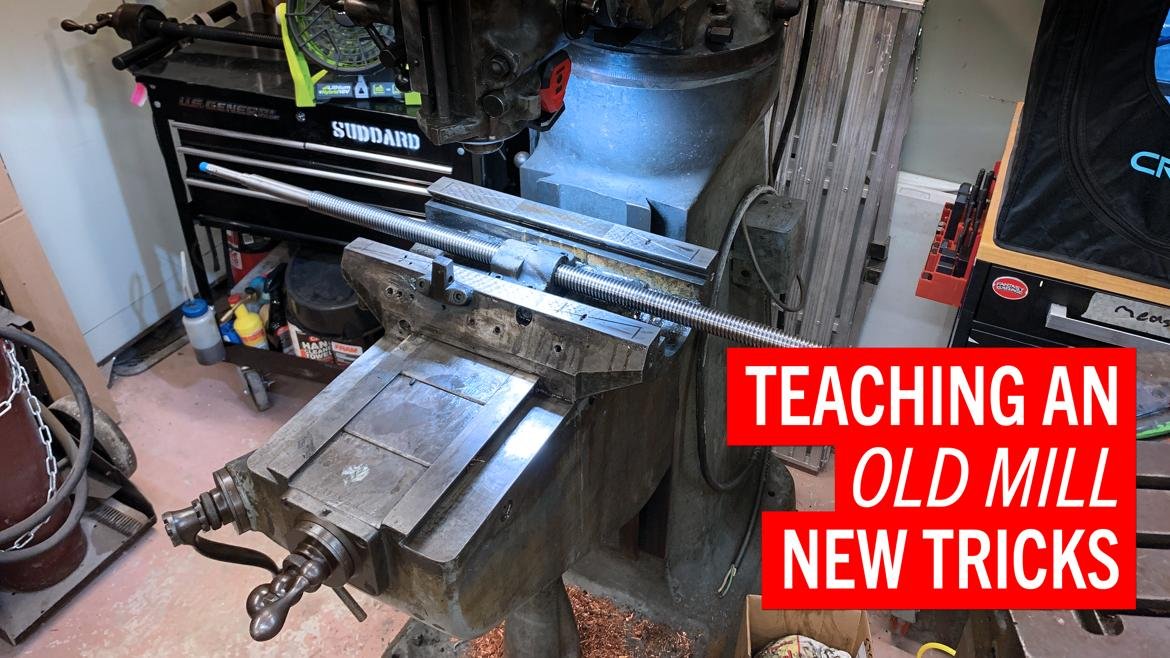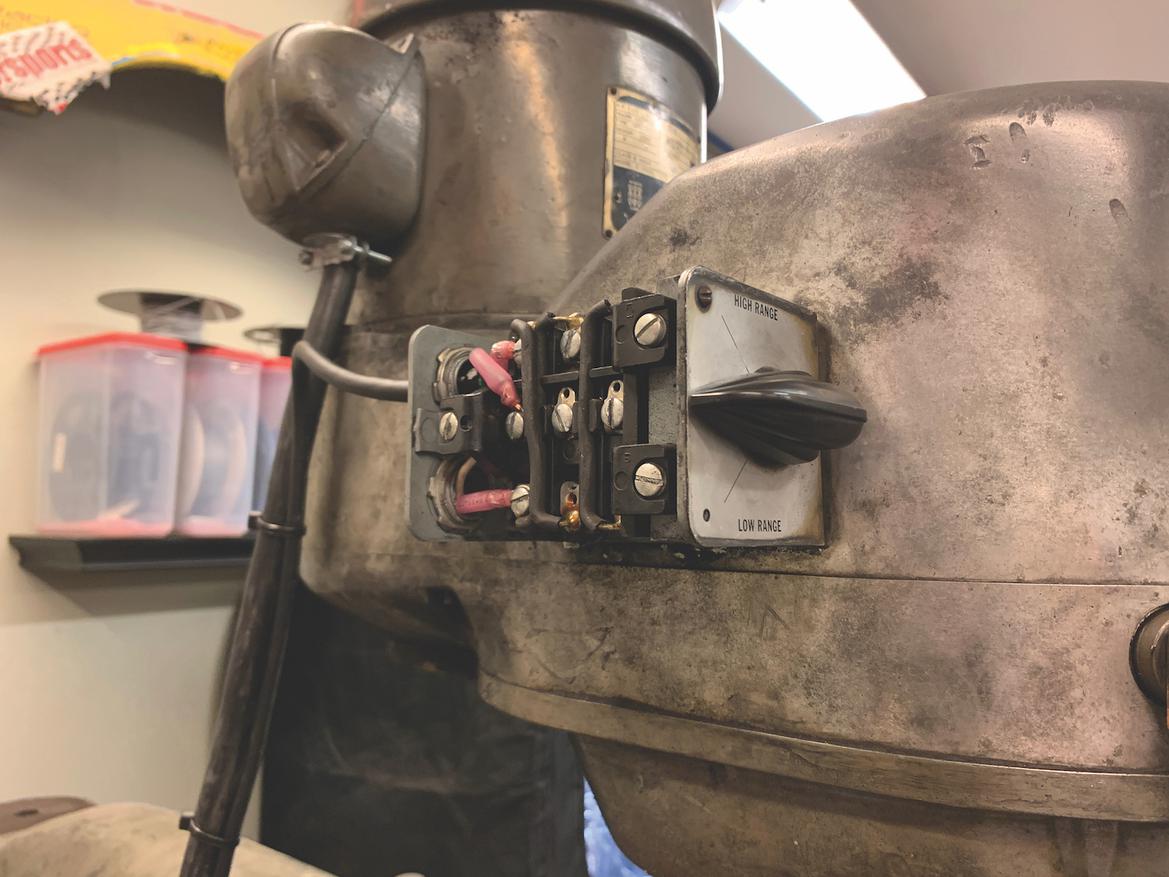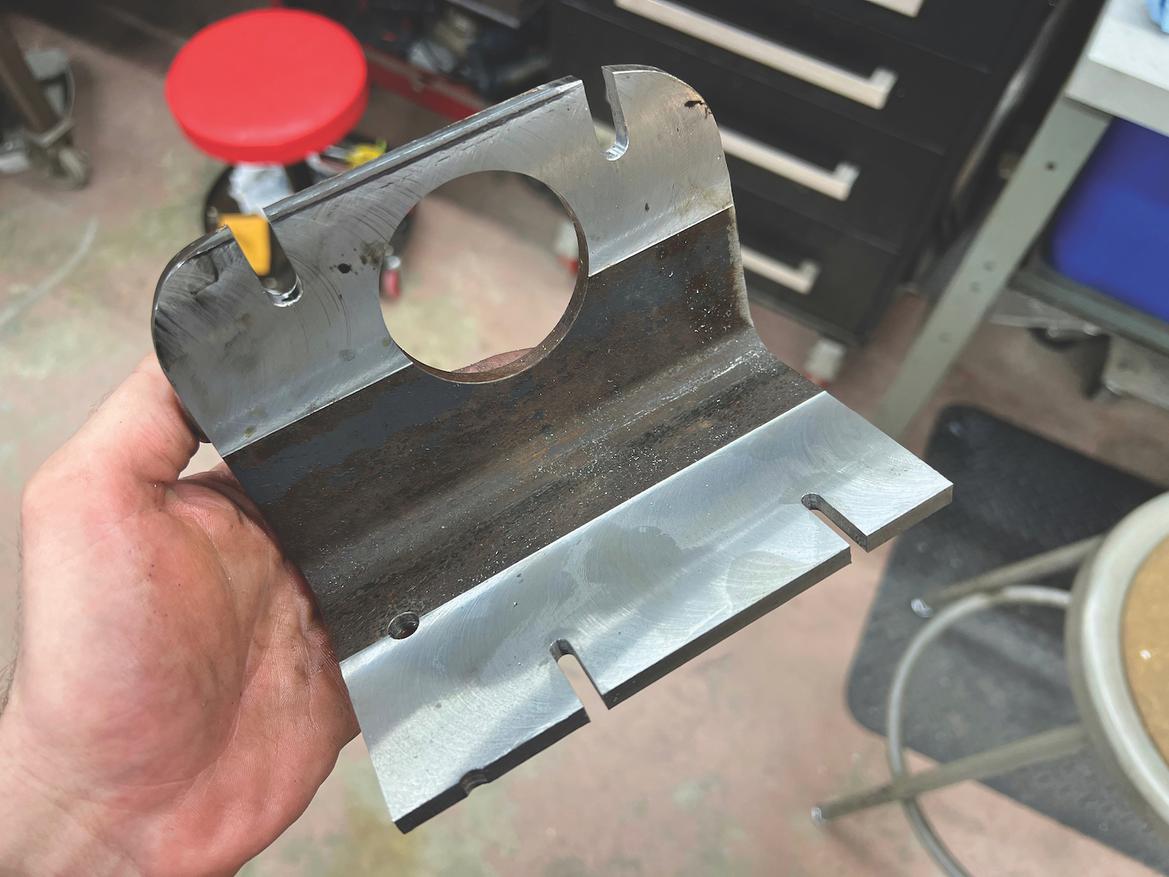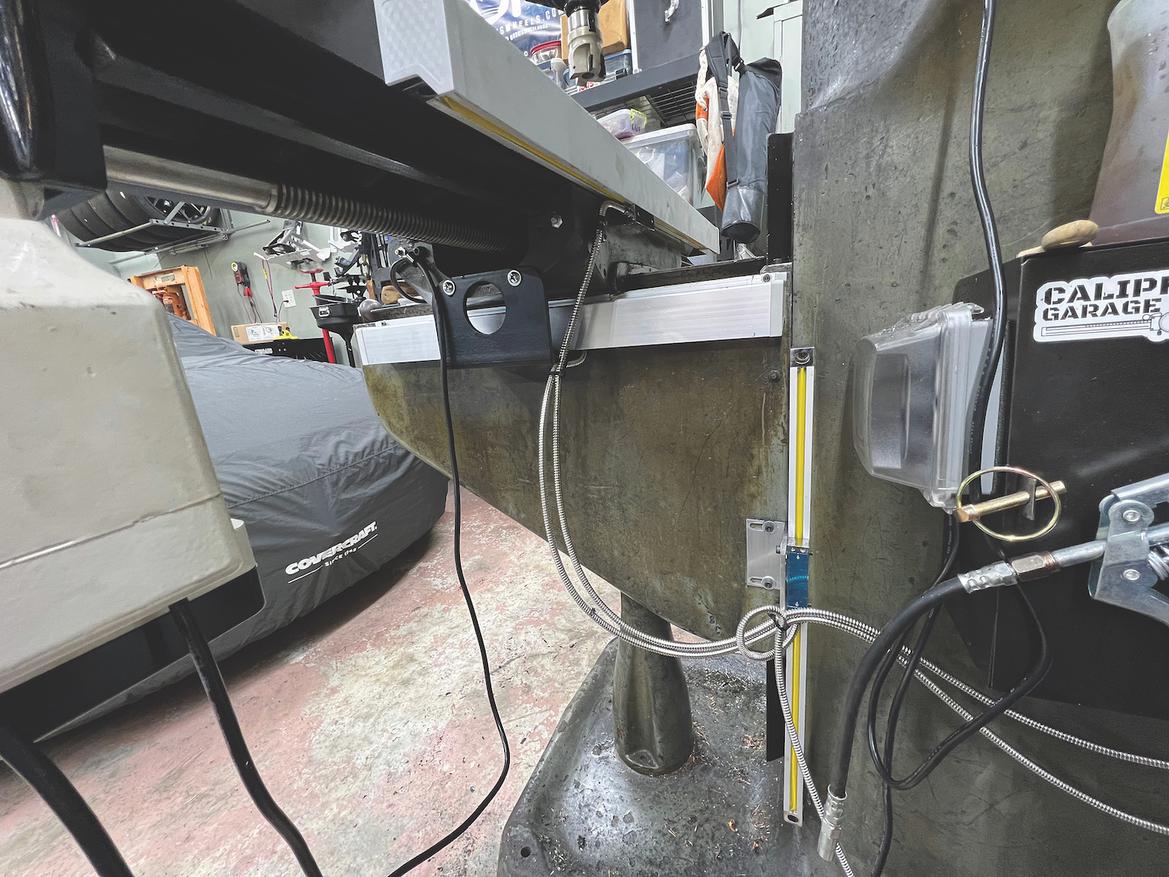
We’d discovered an outdated Bridgeport mill, dragged it dwelling and positioned it in a handy nook of our storage. Now there was one final step earlier than we might begin machining: Get it working.
As with all used automotive, plan on going via a used mill after shopping for it. Ours was lacking some {hardware}.
Thankfully we stay in trendy occasions, so replacements had been just some clicks away. We ended up spending about $500 and a month discovering, ordering, making and putting in the required elements–primarily a brand new leadscrew (the threaded rod that strikes our X-axis) and powerfeed (principally a motor).
Getting Energy
Machine assembled, we wanted to energy it–and that’s the place issues bought difficult.
Like most industrial equipment, our Bridgeport got here with a three-phase electrical motor. It doesn’t matter what form of plug we hooked up, it wouldn’t run from the single-phase energy provide in our storage.
What the heck is a three-phase energy provide? In probably the most fundamental phrases, it’s a very totally different sort of energy discovered solely in industrial amenities, because it’s extra environment friendly at driving large electrical motors just like the one on our Bridgeport.
Getting our energy firm to provide three-phase energy to our residential handle was someplace between insanely costly and inconceivable, so we wanted to someway convert this three-phase machine to run on single-phase energy.
For years, the best means to do that was with a rotary part converter. These large, costly machines–about $500 for one appropriately sized–flip single-phase energy into three-phase energy.
However that is 2022, and there’s a extra inexpensive, smaller, less complicated method to run a three-phase motor: a variable frequency drive. Your electrician can inform you extra, however principally a VFD prices lower than $100, is in regards to the dimension of a burrito, and may simply run three-phase motors on single-phase masses.

Our Bridgeport, like a variety of heavier industrial gear, makes use of three-phase energy, one thing you’re not more likely to have in your storage. To energy the mill in our dwelling store, we wired in a variable frequency drive.
We ordered one on-line, then constructed an enclosure for it on the facet of our machine utilizing elements from an area electrical surplus retailer. Identical to that, our Bridgeport might plug into the usual welding outlet in our storage. We even wired within the OEM motor change to manage the VFD so our machine nonetheless appears and runs similar to some other Bridgeport.
VFDs have one different trick up their sleeve: They’ll infinitely fluctuate the pace of the motor they’re driving, which is nice in case your mill doesn’t have a variable pace head like ours. We didn’t want the pace management, so we set our VFD to at all times run at 60 hertz, the usual for the U.S.
Can You Learn Me Now?
We now owned a Bridgeport with working axes and a working motor, however after utilizing the mill for few easy initiatives, we realized we simply couldn’t make correct elements with it. After double-checking our setup, we found out the issue: We merely weren’t ok with the dials on our Bridgeport.
Every deal with has a dial graduated in hundreds of an inch, and turning a deal with 10 thousandths of an inch theoretically means the instrument will transfer 10 thousandths.
So why couldn’t we make correct elements? Easy: compounding error, the machinist’s solely pure predator. Each time we flip a knob, it’s not precisely excellent–that might be inconceivable. So a 0.010-inch transfer may really be 0.011 or 0.009 inch.
This will get worse if you change instructions, as each leadscrew has backlash. If an operation has 20 actions, the errors rapidly add up.
These issues are minor if you’re making large, easy elements–who cares if one thing is 3.001 or 2.999 inches lengthy?–however they’re important in the case of small parts that want to suit collectively.
Oh, and utilizing the dials is sluggish, too. Each transfer requires understanding the place the instrument sits and the place it must be so you’ll be able to add or subtract the suitable movement. Conserving observe of the place the instrument is throughout every transfer requires a calculator and scratch paper, which takes time and affords extra alternative for error.
There are two methods to resolve these issues. The primary: Turn into a machining savant who can spin every knob completely, right for error and backlash in actual time, and observe the instrument with out scratch paper. That’s most likely how individuals did this within the Thirties, however we don’t have the time or persistence, and perfecting our method with knobs won’t ever be as correct as the opposite choice: Set up a digital readout, generally abbreviated as DRO.


Extra trendy know-how: As an alternative of turning knobs to make cuts, we put in a digital readout.
DROs are superior as a result of they observe the place of the axis, not the handles or screws. In different phrases, fairly than measuring the enter and inferring the output–like these scales on every knob–they only observe the output. That is extra correct and means measurement errors don’t compound over time. Plus, DROs show this data on an easy-to-digest show, which additionally incorporates a calculator and a few built-in formulation to compute extra advanced geometry.
Okay, let’s go DRO buying. You should buy a name-brand DRO for about $2000 or an off-brand one for as little as $200. Costs fluctuate primarily based on the standard of the show, the standard of the devices really measuring every axis, the mounting {hardware} included, the variety of axes, and the post-sales help.
We selected a generic, imported LCD show, pairing it with generic glass scales. We measured our machine’s x, y and knee (z) journey, then specced the glass scales to suit.
DROs can measure instrument place through glass scales, like our setup, or through magnetic scales. These are much less breakable but in addition appear to price three to 5 occasions extra. Glass scales work positive, theoretically, so long as you’ll be able to maintain a strip of glass clear and intact subsequent to a machine that actually shakes the bottom when it’s turned on. Fingers crossed.
All instructed, this DRO system price $391. We saved a lot of cash by making our personal mounts for every thing, selecting an off-brand, and deciding on the extra fragile glass scale design. As little as we’ll use this machine in comparison with a manufacturing store, we didn’t really feel the extra sturdy scales had been definitely worth the worth improve. We’ll simply have to ensure to maintain these away from impacts and coolant. The LCD show was admittedly a little bit of a splurge, however the interface ought to be a lot less complicated to grasp than an eight-digit LED show with mediocre directions.


We needed to make some brackets to connect the required glass scales, however for lower than $400 we improved our mill’s accuracy.
Set up took a couple of evenings and principally concerned drilling and tapping a lot of holes. In truth, we solely wanted to make one half, a mount for our machine’s y-axis scale head. Lastly, we might precisely transfer the machine alongside every of its three axes. It was time to make some elements.
What’s Subsequent?
It’s possible you’ll not have realized it, however there’s been an elephant within the nook for this whole story: tooling, or the chances and ends we pair with our mill to really make elements.
Widespread knowledge says shopping for tooling will dwarf our preliminary funding within the machine itself, which means we’ll spend not less than $3000 simply on equipment. However is that true, and does it should be? We’ll discover out within the subsequent installment of this collection, after we purchase a vise, rotary desk and every thing else wanted to make elements with our new machine.
Trending Merchandise




